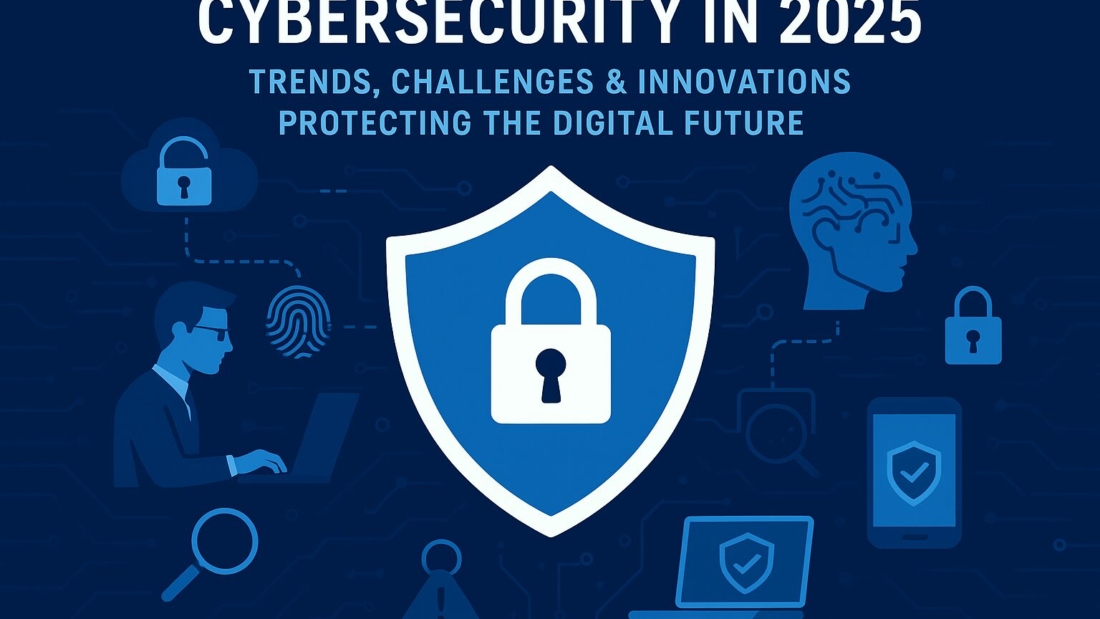As digital transformation accelerates globally, cybersecurity has become a core priority for governments, enterprises, and individuals. In 2025, cyber threats are more sophisticated than ever, driven by advancements in artificial intelligence, the expansion of remote work, and the widespread adoption of Internet-connected devices. Cybersecurity is no longer just about installing firewalls — it is about building intelligent systems capable of detecting, preventing, and responding to attacks in real-time.
In today’s hyper-connected era, cyber attackers are leveraging emerging technologies, automation tools, and advanced social engineering techniques to bypass traditional defenses. Meanwhile, businesses worldwide are investing heavily in cyber-resilience strategies to protect their data, operations, and reputation. Here’s a detailed look at how cybersecurity is evolving in 2025, the challenges shaping the industry, and the innovations powering a more secure digital future.
1. Rise of AI-Powered Cybersecurity
Artificial intelligence is transforming cybersecurity in 2025. Traditional security systems relied on manual monitoring and rule-based detection, but cyber criminals have now started using AI to automate attacks and exploit system vulnerabilities faster than ever before.
To respond, organizations are implementing AI-driven defense systems capable of:
- Real-time anomaly detection
- Automated threat analysis
- Predictive attack forecasting
- Intelligent vulnerability scanning
AI security platforms can now detect unusual patterns within seconds and isolate compromised systems automatically. This proactive defense model reduces response times, minimizes human error, and strengthens overall system resilience.
2. Zero-Trust Architecture Becomes the Standard
The “trust no one” approach has moved from buzzword to business necessity. Zero-trust cybersecurity requires every user, device, network, and application to be authenticated continuously — even if they are inside the organization.
In 2025, companies are widely deploying:
- Multi-factor authentication (MFA)
- Identity & access management (IAM)
- Micro-segmented networks
- Continuous user verification
Zero-trust frameworks are particularly critical as hybrid and remote work environments continue to grow, making traditional perimeter security obsolete.
3. Growth of Ransomware-as-a-Service (RaaS)
Ransomware attacks are projected to break records in 2025. Criminal groups now operate like organized tech startups, offering ransomware-as-a-service tools on the dark web. Even individuals with no technical skills can launch attacks by renting malware and hacker-toolkits.
Key trends include:
- Targeting hospitals, banks, and government systems
- Encrypting cloud data & backups
- Using AI for phishing automation
- Expanding attacks against critical infrastructure
As a result, companies are investing in advanced endpoint security, employee training, and secure backup systems to mitigate ransomware risks.
4. Cloud Security Takes Center Stage
Cloud adoption continues to accelerate across industries, but cloud environments also bring unique vulnerabilities. In 2025, cyber attackers are exploiting misconfigured cloud storage, unauthorized access, and insecure APIs.
To counter threats, organizations are prioritizing:
- Cloud access security brokers (CASB)
- Cloud workload protection platforms (CWPP)
- Encryption-everywhere policies
- Secure DevOps (DevSecOps)
Businesses that take a proactive cloud-security approach are better positioned to protect sensitive data and maintain compliance with global privacy laws.
5. Biometric Security & Passwordless Authentication
Passwords are becoming outdated. In 2025, biometric and passwordless authentication systems have become mainstream in smartphones, enterprise platforms, banking systems, and secure devices.
New security methods include:
- Facial and voice authentication
- Fingerprint & retina scanning
- Behavioral biometrics (typing speed, gestures)
- Hardware security keys
These technologies help eliminate stolen passwords — one of the leading causes of cyber breaches.
6. Cybersecurity Skills Gap & Workforce Demand
Despite advancements in technology, human expertise remains essential. Organizations continue to face a global shortage of cybersecurity professionals. Roles in highest demand include:
- Ethical hackers
- Security analysts & architects
- Incident response specialists
- Cloud security engineers
- AI security experts
Businesses are investing in employee cybersecurity training and partnering with cybersecurity firms to secure their systems.
7. Future Outlook: Building Cyber-Resilience
Cybersecurity in 2025 is not just about defense — it’s about building resilience. Organizations are adopting frameworks that ensure rapid recovery from attacks while maintaining business continuity.
Key focus areas include:
- Cyber insurance policies
- Automated incident response
- Real-time threat intelligence sharing
- Secure AI development practices
Infrastructure security, ethical AI usage, and global cybersecurity cooperation will play a major role in protecting digital ecosystems in the years ahead.
✅ Conclusion
As cyber threats evolve, businesses must adopt smarter, faster, and more proactive security strategies. With AI-driven defense, zero-trust architecture, cloud-secured frameworks, and a skilled cybersecurity workforce, organizations can protect their assets and data in 2025 and beyond. Cybersecurity is no longer optional — it is a fundamental pillar of digital success.

